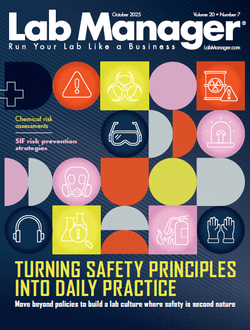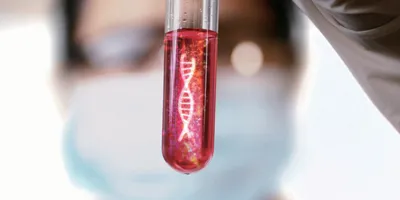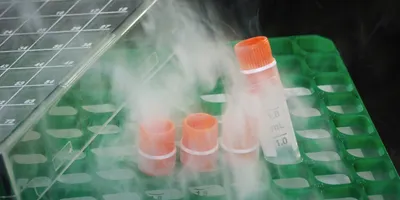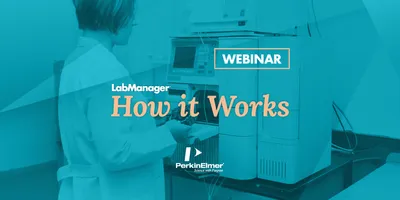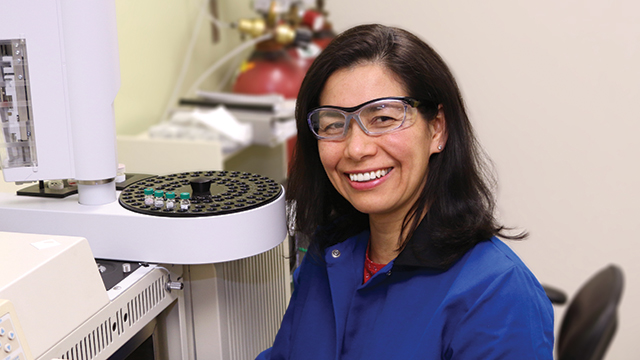
Mrs. Patricia Granados is the research instrument technician at the Centre for Environmental Analysis and Remediation (CEAR) at Saint Mary’s University in Halifax, Nova Scotia, Canada, where she also received her MSc in applied science in analytical chemistry. Mrs. Granados received her bachelor of science in chemistry with honors from the Universidad Nacional de Colombia and a certificate in marketing from the University of Los Andes in Bogotá. At CEAR, she offers technical support to students and faculty in the areas of chromatography and spectrometry, conducts analyses of samples, develops methodologies for analysis, and trains students in the use of these instrumental techniques.
Q: What does your lab do?
A: The Centre for Environmental Analysis and Remediation is an instrumental lab; it’s a centralized facility that is used for teaching and research. We offer services to the Faculty of Science at Saint Mary’s, although our main users are people in chemistry and environmental science. The facility offers the opportunity to do the teaching part or any research that requires the instrumentation that we have available. As well, we offer sample analysis for internal and external clients—universities are the main focus.
Q: How many staff members do you have?
A: I am the only dedicated staff member for the facility, but depending on the type of project we get, normally the principal investigator has a student who is dedicated to the project. I will work with that [student] in training, setting up the initial conditions of operation, and helping start up the project, and then provide technical support. In general, for the facility, there are times within the year that are low use and then times when there is high demand. If we foresee that there is going to be quite a bit of demand, then I have the option to hire a co-op student, and that person is trained and prepared for working during the times that we have high volume. Since this is a small university, the students have the chance to obtain hands-on experience. The type of student I normally get has the basics of analytical chemistry, so [he or she] come[s] to put into practice what [has been] learned in the classroom.
Q: Apart from gas chromatography (GC), what other key technologies do you use?
A: We have liquid chromatography paired with mass spectrometry (MS) and capillary electrophoresis, which can also be coupled with mass spectrometry. We have elemental analysis—so carbon, hydrogen, and nitrogen analysis.
Q: What do you use GC for?
A: There are routine analyses that are set up for the students to learn the basics of separation and quantification of compounds; for example, analysis of polyaromatic hydrocarbons that are found in gasoline. We are more interested in using different techniques for GC-FID (GC flame ionization detection) and GC-MS, but in terms of research, because this is not routine analysis, it depends on what [the researchers] are interested in. Through the years we have had a variety of projects mostly for the analysis of volatile and semivolatile compounds. For example, we have done analysis of fatty acids extracted food matrices and projects involving the determination of polyaromatic hydrocarbons in water samples—wastewater or drinking water—as well as [work involving] organic solvents or semivolatiles in water. Following kinetics of reactions and characterizing unknown substances [is another focus]. So because it’s a research facility, we don’t have any specific type of analysis that we do all the time.
Q: What key challenges do you face when it comes to GC?
A: The major task is keeping the [equipment] up and running. The instrumentation that we have is instrumentation that you don’t change every year, so the challenge is to keep it up to standards high enough to do any research on it. Since we don’t have routine analysis per se, the challenge is [gathering the required information] for any new project—[finding out] the specifics of the project, what the requirements are, and how it fits with the technology we have available. One of the other big challenges is trying not to have downtime on the instrument, and if there is any downtime, minimizing that time.
Q: What is your troubleshooting process when you encounter a problem with your GC system?
A: My process is always to take a logical approach to the problem. First, I try to organize the information that I have from when the instrument was working up to the point [when something went wrong]. Then I try to answer, What is the specific problem? When did it start? How did it start? Basically, I focus on isolating the problem. In which part of the instrument is it occurring? Is it in the injector, in the column, or [in] the detector? One easy thing to do is find out if these types of problems have happened before, so I check the instrument logs and, if it is something that’s happened in the past, then I see what was done to work out the problem. Because we have many different projects, we might have changed some instrument conditions or components, so I check if anything has changed since the last time we used it when it was working well. If the problem is new, it’s [a process of] trying to rule out those parameters that might cause the problem, things like type of liner or the injection settings, or the type of column that has been installed. Another step that I follow is using a reference standard, something that I know and am familiar with and I know what the behavior of the instrument is with that type of analysis. I’ll go back to that and check the instrument, and if that part is working then that’s another way to analyze where the problem might be. There are a number of components in the instrument; the idea is not to change too many things at the same time, because then you won’t know what you did to solve the problem or make it worse. It’s better to be systematic and go to the obvious part and then start going more complex. Sometimes the problem can be solved very easily by just having a thorough look at all the parts of the instrument.
Q: What is the most important thing to do to keep a GC system in top working order?
A: I would say it’s following a preventive maintenance schedule. It’s very important to change consumables on the [instrument] as required, as often as is needed, or sometimes, as often as is requested. For the normal, regular performance of the instrument, the regular changing of basic consumables, such as the septum or the glass insert, and cleaning the detector are important. The quality of the gas supplies is important too. You can find different vendors and different types of supplies that don’t necessarily fit well with your instrument, so that’s important to keep the instrument actually working—ensuring the high quality of supplies. One of the most important things for me is just to keep an experimental method that is run before the conditions on the instrument are changed to ensure that it’s working well. That’s what I use as a starting point in my troubleshooting, as well as keeping good preventive maintenance logs.
Q: What resources do you find most helpful when it comes to diagnosing a problem with your GC system?
A: I go back to what I know about the instrument—what the baseline is, how the instrument was behaving when the experiment started, and then evaluate the response of the instrument with the new conditions. As mentioned before, checking the response of the instrument by using a particular method where I know what to expect and always looking into the history of the instrument [is useful]. I also use a lot of technical support from the vendors when I run into trouble. That is a really good source of knowledge. Also, there are a lot of web resources where you just type in the type of problem you have and somebody has usually done something that can help you and can shed some light on the problem. I know there are chat rooms as well where you can get some information, but I haven’t really worked with them much; I mostly use technical support from vendors. And the instruction manuals are definitely a good resource, but sometimes the problem with them is that the information that is available is limited. Normally, you get information about how to use the instrument, but not much on how to troubleshoot the problems you might have.
Q: What do you enjoy most about working with GC?
A: It’s a relatively simple technique, but it requires knowledge to determine the proper conditions for analysis. Because of the nature of the job I do here, it [involves] solving different problems every time, with every project. So you are constantly learning what you can do. Having different users for this instrument and instrumental setups brings a lot of challenges, but at the same time, it’s a very rewarding experience once you get going with a project and get results; you are learning a lot in the process.
Q: For those who are new to GC or just starting to use it in their labs, what key advice do you have for GC system troubleshooting?
A: Keep records. Choose a sample and an experiment that best reflect the type of work that you do—a very simple experiment that allows you to know your instrument—and stick with it. [That way], every time that you have a problem, you can go back to that experiment and figure out what the problem is or where the problem might be. The history of the instrument is also very important.



